Rein-back is a movement that is in dressage tests from Young Horse classes, Elementary classes and all the way to FEI and Grand Prix. It is a movement that is not often talked about despite being an extremely good exercise for so many things.

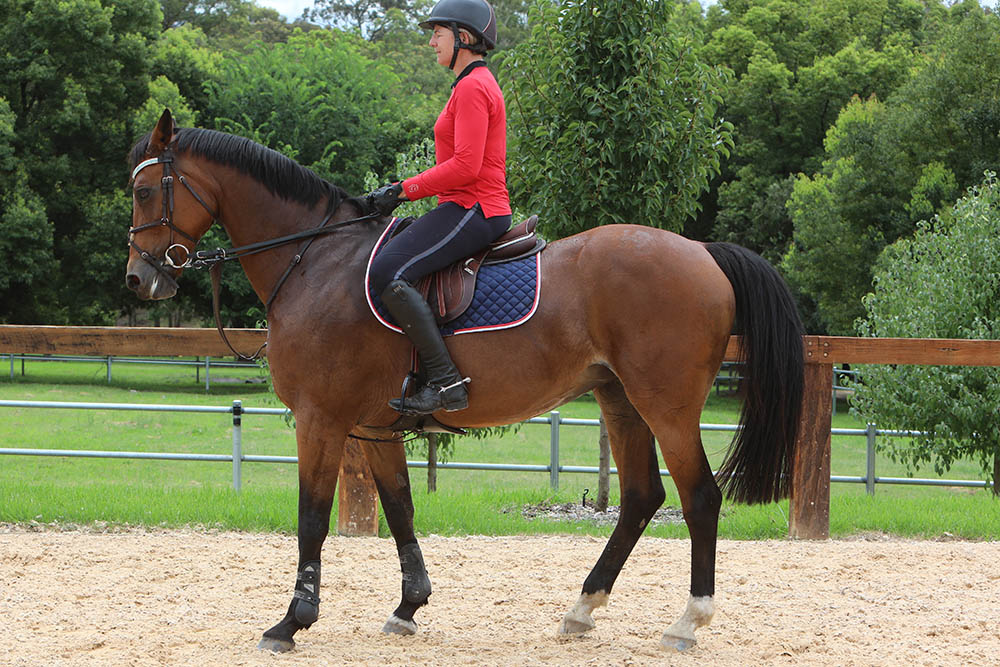
Rein-back is often trained as early as when a horse is being broken in to saddle. It is an extension of the halt. The FEI definition of it is as follows:
ARTICLE 406 REIN-BACK:
- Rein-back is a rearward diagonal movement with a two (2)-beat rhythm but without a moment of suspension. Each diagonal pair of legs is raised and returned to the ground alternatively, with the forelegs aligned on the same track as the hindlegs.
- During the entire exercise, the Horse should remain “on the bit”, maintaining its desire to move forward.
- Anticipation or precipitation of the movement, resistance to or evasion of the contact, deviation of the hindquarters from the straight line, spreading or inactive hind legs and dragging forefeet are serious faults.
It is a movement that can create great problems and is a movement that can be fraught with resistance and dire consequences if forced or asked for at the wrong time. Often horse breakers will introduce it as early as when mouthing and when still in long reins.
In fact, the very first connection to rein-back is no doubt as early as the first halter training session. The most important lesson in any horse’s life is to move away from pressure whether that be in a forward, sideways or backwards manner. So, when you are training to lead the foal or yearling, it will learn to move back away from the pressure of the halter over the nose, or even the pressure of a hand on the chest.
Even in these early days you will find it easier to go backwards from pressure if the horse isn’t planted in the halt. Move a little sideways then backwards, as once the legs start to move it’s easier to reverse. Once the horse has planted all the legs at halt, that first backwards step is often difficult. Many people use the “kluck” to encourage the horse to move forwards, and so when you want the horse to go in a backwards manner people “kluck”, and when nothing they “kluck” even more; it is then often confusing as this sound has always been used to go forward and now you are “klucking” like mad and wondering why the horse wants to head off forwards… it’s pretty obvious! The word “baaack” in a monotone calm way is better encouragement for rein-back, and voice commands can then be reiterated once under saddle, for example “walk”, “trot” and “canter” and now “baaack”! It’s a good help.
It is always a very good idea to practise on the ground, as a lot of rein-back is moving away from pressure. Never try to rein-back on a green horse that you have never done any ground work with, as it is so often very scary and dangerous. The horse has no idea and pushes at the bit and then panics and often will rear and throw themselves around; the number of injured riders and confused horses from this reaction is not worth thinking about. NEVER take the training of rein-back lightly.
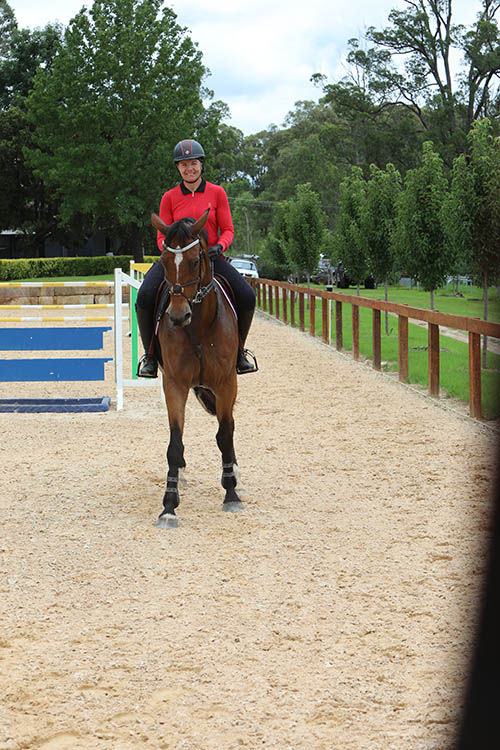
Once your horse knows how to go backwards in hand, and perhaps in long reins from a well-experienced horse breaker, then the process to start the rein-back from under saddle can start. The biggest thing to remember is never to use force. You perhaps need to have an experienced person on the ground to help so the horse has the chance to connect the ridden aid with the aid from the ground, combined with the voice aid!
The horse must have a good understanding of moving away from the leg both forwards and sideways. Then he must also understand to be soft in the bridle with an ability to be round and low in the neck. A horse cannot rein-back with a hollow back, and to keep the back up and useable it’s important to have a low neck and mouth that is not afraid.
The rider’s weight in the early stages of training should not be heavy, as this squashes the back down and then the horse braces and cannot move the legs. The hands should not be pulling back but gently resist the forward. It’s a good idea to have someone on the ground to help the novice rider as the rein-back needs a lot of feel. You must be able to slow down to halt – and do not halt for too long, but feel that the horse is round and soft in the hand and that the feet are not at all planted to the floor. Then with a closed hand, low, and a lighter seat and a leg that is a little further back but hardly on (it is interesting to use a closed thigh and not a strong leg, as this type of leg aid initiates the forward movement that the young horse associates also with the “kluck” and is the opposite reaction to what you want). This is the way I initiate the rein-back.
There are so many ways to initiate and train the rein-back under saddle. It is interesting to read top rider’s methods.
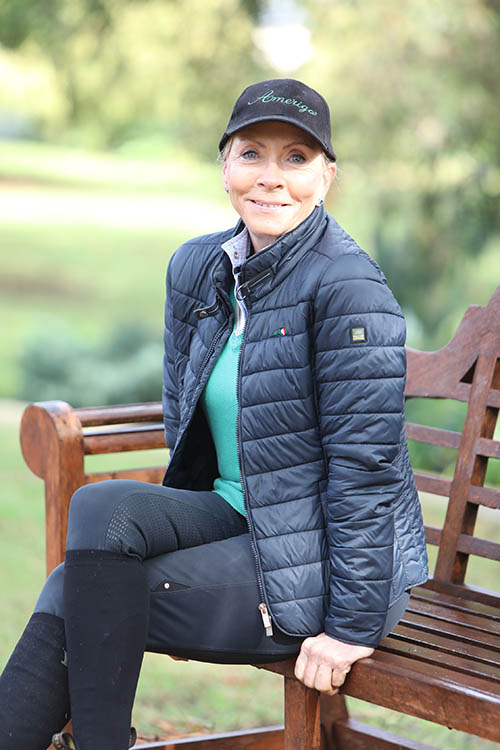
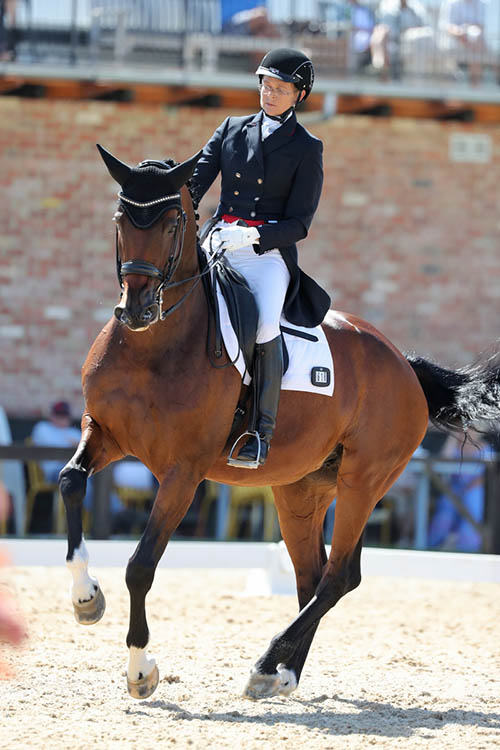
JUDY DIERKS
Judy says this is a movement that needs a lot of feel and agrees it should never, ever be forced.
“It’s important not to halt for too long or get the horse’s feet planted before a rein-back. Never initiate the rein-back against the wall of the school or arena in the beginning, as the horse feels claustrophobic and trapped in that place. It needs to be done on the interior of the arena. It’s a delicate movement that shows trust, as the horse can’t see backwards and has to really trust you.
“Play with it and not for too long. It’s an important exercise and needs careful and trustworthy development. The horse needs to be established on the bit and have a good pliable contact as he comes to halt when the legs are still a little in motion, even a little sideways one way or the other. The horse must understand being on the bit… and be elastic off the leg laterally as well as forward, with an understanding of clear downward transitions.
“From a halt that still feels lively, both lower legs come a little behind the girth and invite a forward desire and the hands then don’t allow the horse forward but instead wait for a backwards step. It’s important not to pull backwards, but ride backwards, and to soften and reward as the horse steps back without losing the connection within the contact (light but not detaching the feeling, steady and releasing without totally giving). To ride forward again, both the rider’s legs move up to the girth and squeeze as in a normal halt or walk to trot transition.”
LONE JØRGENSEN
“Before I teach the rein-back, my riders have a good feel for the downward transitions and a feeling of connection and a half-halt. When these attributes are well established, then explaining the aids to the horse for the rein-back is not difficult. Once this is established then for an active forward-thinking halt, you gently put a leg aid on and when they step forward to the bit you half-halt, and as they back off the contact and step back, you release the pressure and then the next step… leg to hand and half-halt to feel the step back and relax the pressure, and so on.
“The major thing that you don’t want is a horse that wants to put their neck up and hollow their back in the half-halt or the halt, as this will create resistance when you come to make the rein-back.”
GEORGE SANNA
“All my horses come back from the breaker with a rein-back. I think it’s an essential part of the training at that time, and is often initiated in long reins. To step back from pressure is a vitally important factor.
“There is the occasional horse that is stubborn regarding the rein-back; it’s about initiating the backward step from the horse not being stubborn and with firmly planted feet. With an experienced rider on board I will perhaps stand at the horse’s shoulder and with a dressage whip touch the horse’s forearm or leg until it lifts it up to that pressure. When this reaction is established, as the horse lifts the leg to the whip the rider uses a half-halt aid and asks the horse to go backwards with a resisting hand. Never with force, as rearing is not a desired response and the horse must not be tense and MUST have a downward-thinking neck.”
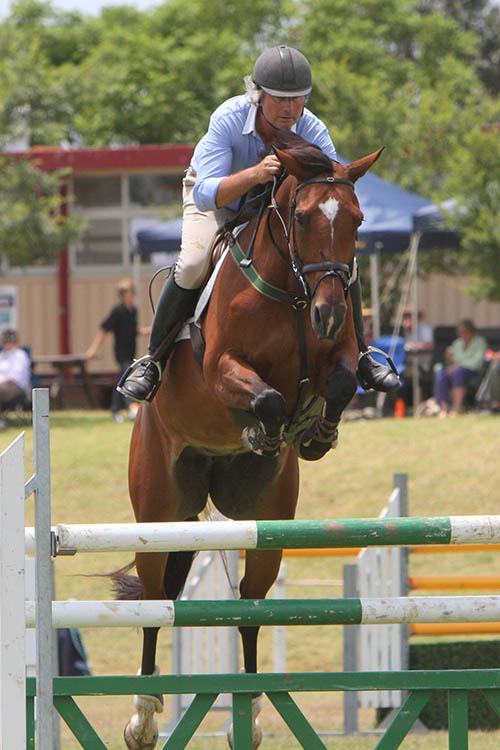
AN IMPORTANT MOVEMENT
The rein-back is an extension of the half-halt and the halt; if the half-halt doesn’t work then halt; if the halt is stubborn then rein back… the rein-back is the ultimate half-halt indicator!
All trainers and riders need to learn the advantages that the rein-back allows:
- It teaches the horse to back away from pressure.
- It teaches the horse to rock his body back onto the hocks.
- It is a submissive exercise.
Above all in a dressage test, the rein-back is the ultimate tell-tale movement in regards to obedience, softness, thoroughness, balance, acceptability and submission. EQ
YOU MIGHT ALSO LIKE TO READ:
Young Horse Classes: A Fun Launching Pad – Equestrian Life, February 2022

